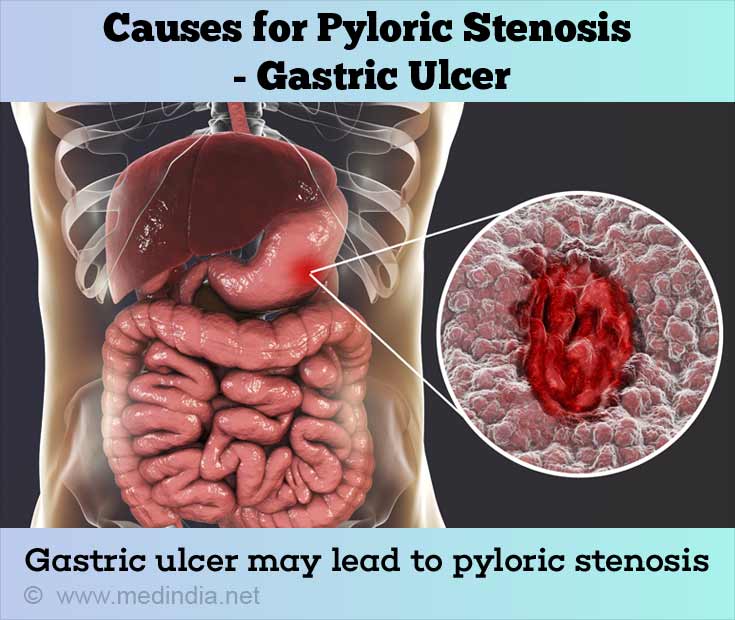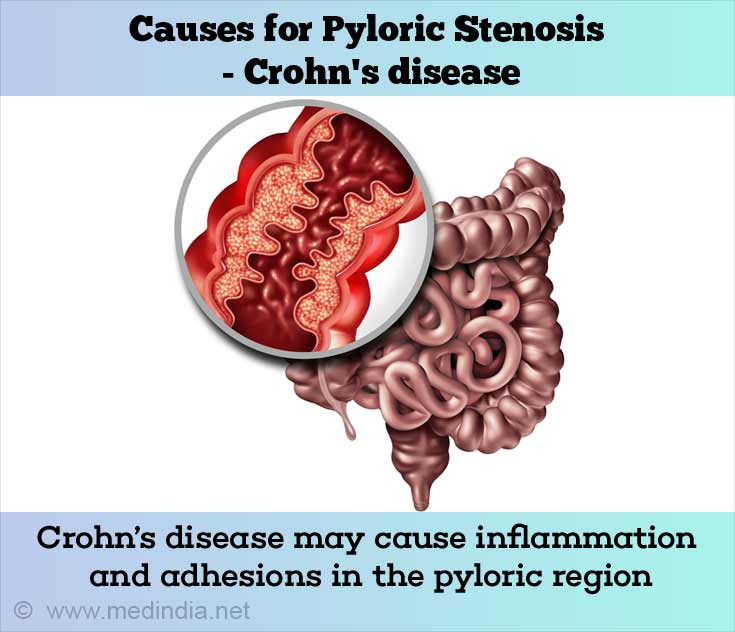Causes of Pyloric Stenosis in Adults
Based on the cause, pyloric stenosis can be classified as primary or secondary type.
The exact cause of pyloric stenosis is not known. However both genetic and environmental factors may contribute to the development of pyloric stenosis. Based on the cause, pyloric stenosis can be classified as primary type or secondary type.
Primary type of pyloric stenosis in adults occurs without involvement of any apparent underlying disease or predisposing factors. It could occur due to persistence of the thickening of the pylorus muscle through adult life. This type of stenosis is mostly asymptomatic; in certain cases becomes symptomatic in later life.
Secondary type of pyloric stenosis occurs as a consequence of a disease process. In some cases, the narrowing of the pyloric region is not due to thickened muscle tissue but due to fibrous tissue. Secondary type of pyloric stenosis in adults is often associated with:
- Presence of gastric and duodenal ulcers, benign or malignant tumors of the stomach, bezoars (a ball of swallowed material that blocks the passage of food from the stomach into the intestines).

- Conditions that cause edema, spasm or inflammation might further narrow the outlet and precipitate pylorus occlusion that has already occurred.
- Crohn’s disease, which may cause inflammation and adhesions in the pyloric region.

- Persistent spasm of the pylorus, possibly due to overactivity of the vagal nerve that supplies the pyloric region.







